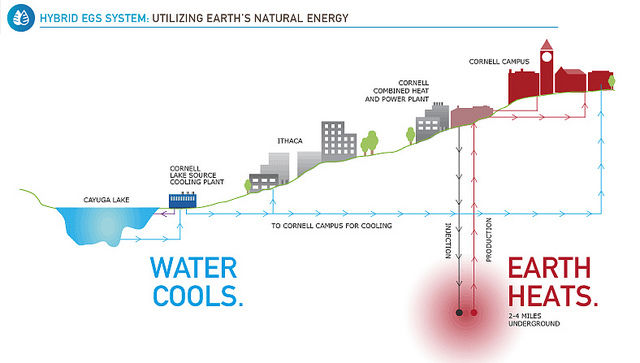Cornell University's Senior Leaders Climate Action Group presented its findings Tuesday night regarding the school's stated goal of becoming a carbon neutral campus within 20 years and the use of an "unproven" but intriguing new method of heat production that could greatly reduce the school's carbon footprint by nearly 40 percent.
The report, titled Options for Achieving a Carbon Neutral Campus by 2035, detailed the group's work to determine the viability of six different potential routes forward in the school's quest for carbon neutrality. In the end, the group chose option one, a combination of Earth Source Heat, wind, water, solar and biomass. The plan would require drilling between two and four miles into the ground in order to find a depth that would properly warm the circulating water to the point that it can be used to heat the campus' buildings.
Lance Collins, the school's Dean of Engineering explained the unique challenges that the region itself presents to this sort of geothermal system-- out near the West Coast, where projects similar to this are a bit more common, the natural rate of earthquakes actually makes it easier to access the high temperatures necessary to heat the water. Lava isn't as far underground, so drilling for heat is much less rigorous. In the east, however, more drilling is necessary, though that obstacle could make the project that much more innovative.
